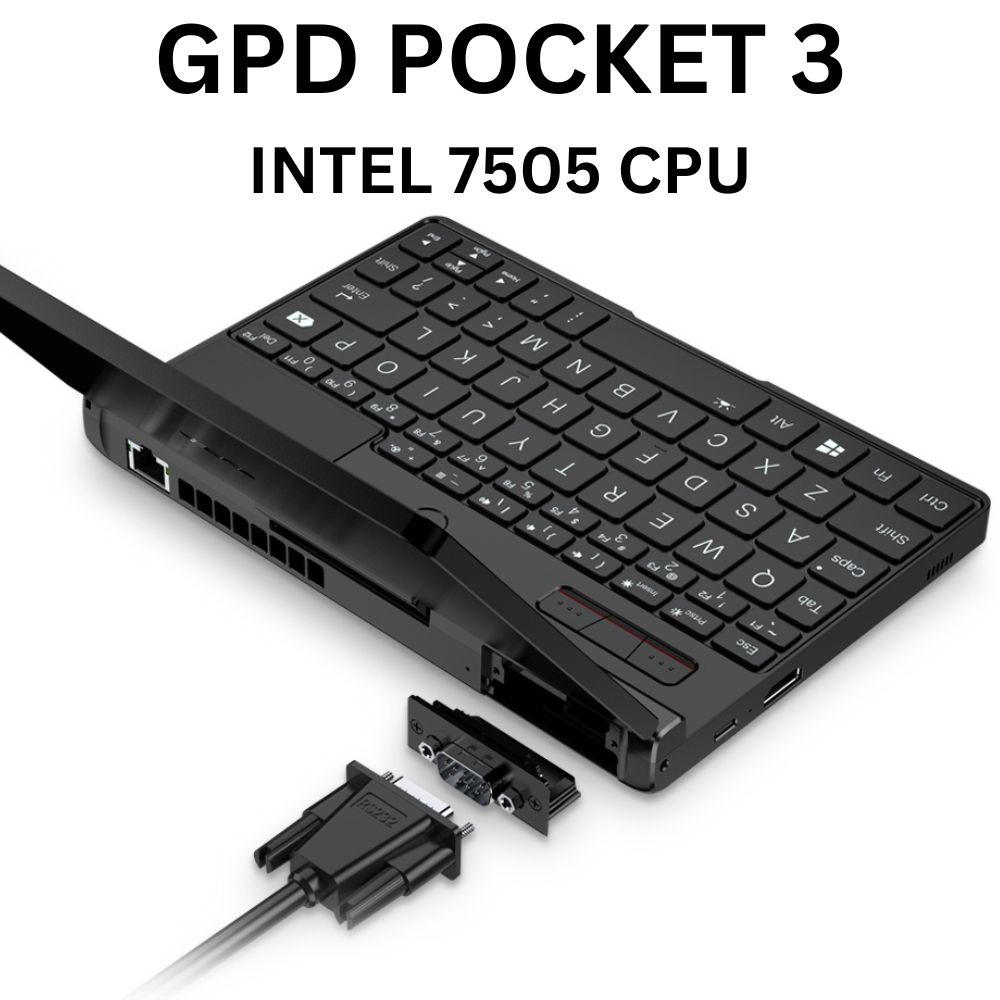
GPD Pocket 3 review – New 2024 model with Intel Pentium Gold 7505 CPU
GPD Pocket 3 Review 600.95
-
Battery Life
-
Display
-
Price to Performance
-
Keyboard
Summary
Pros
- Compact & Portable
- Versatile 2-in-1 mini laptop and tablet design
- Modular port including RS-2
- High resolution 8″ touchscreen
- 32 & KVM options
- Good performance for its size
Cons
- Small keyboard may take some getting used to
- No built-in SD card slot
- Relatively high price compared to larger laptops
GPD Pocket 3 Unboxing

GPD Pocket 3 Mini Laptop

Starting off our GPD Pocket 3 review, let’s take a quick look at what’s included in the box. Inside, you’ll find the GPD Pocket 3 mini laptop itself, along with a user manual available in both English and Chinese. The package also includes a power supply, and we’ll provide the correct adapter for your country. Lastly, there’s a USB Type-C charging cable.
GPD Pocket 3 Overview
Moving on with our GPD Pocket 3 review, we take a closer look at the GPD Pocket 3 lightweight laptop. It measures approximately 7.79 x 5.3 x 0.78 inches (19.8 x 13.7 x 2.0 cm) and weighs 725g (1.59 lbs).
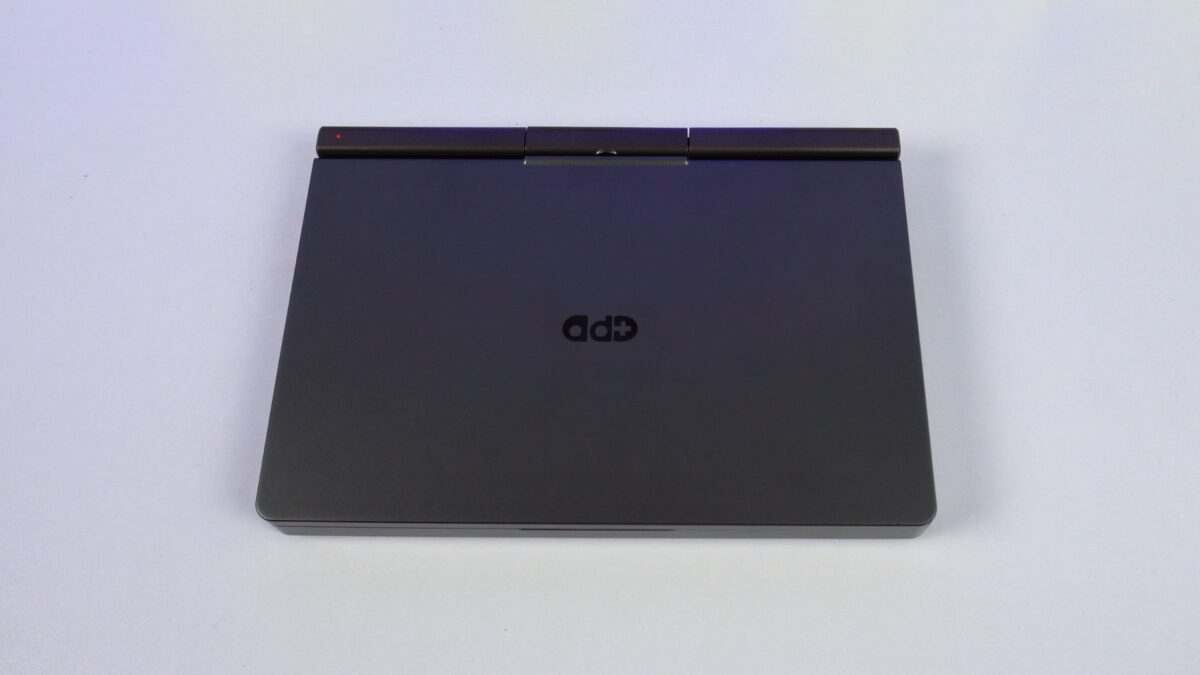
The device features a gunmetal-colored aluminum alloy case, which adds a bit of weight but also ensures durability. It houses advanced components, such as the Intel Pentium Gold 7505 processor, giving it a sturdy feel and providing protection against bumps and scrapes.
Upon opening the lid, you’ll be greeted by an 8-inch H-IPS touchscreen display with a resolution of 1920×1200. The 2-in-1 design allows you to twist the display and fold it down to convert the laptop into a tablet, making it versatile for different use cases. Reversing the twist transforms it back into a traditional laptop for students.
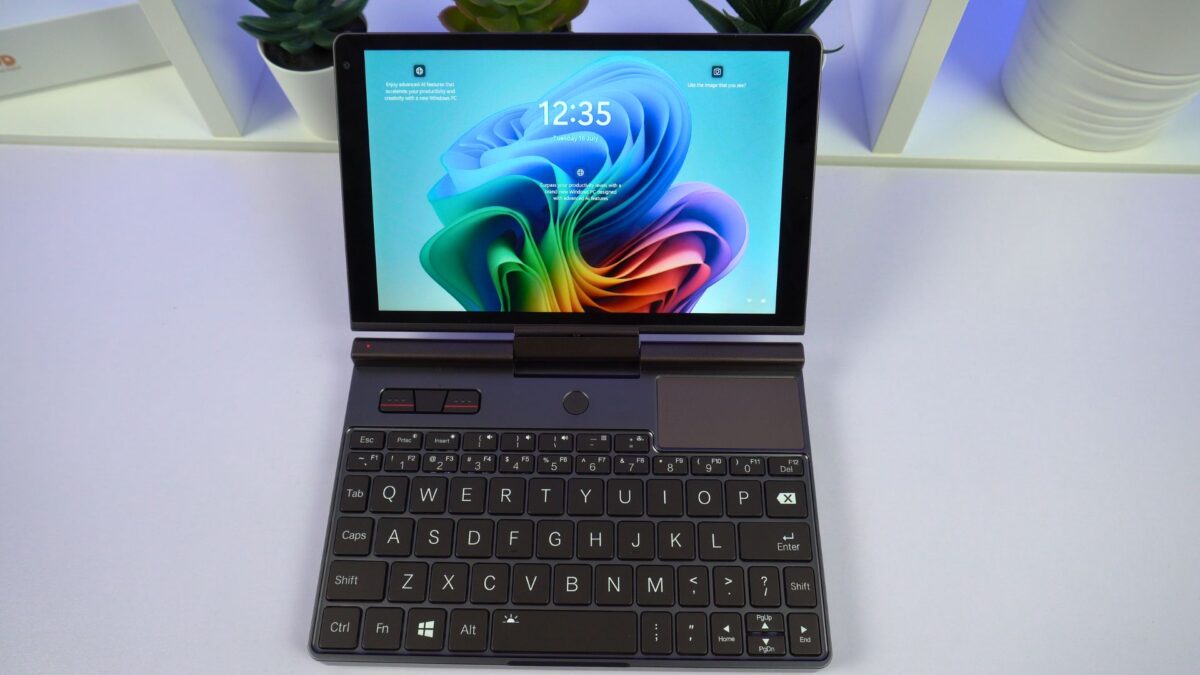
The display also includes a 2-megapixel camera with a 1600×1200 resolution and a built-in microphone, making it ideal for high-quality video conferencing or online meetings.
On the lower half, you’ll find left, middle, and right mouse buttons, a power button with an integrated fingerprint scanner, and a touchpad that supports up to three-finger gestures.
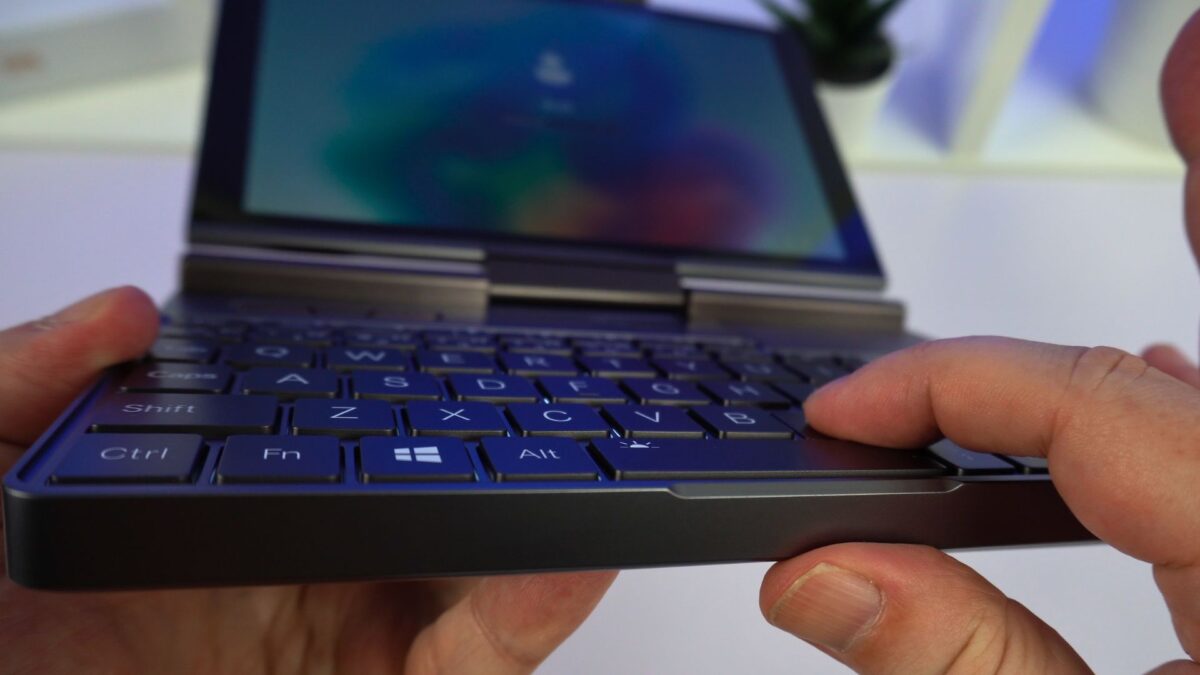
The full QWERTY keyboard is backlit and can be toggled on or off. The keys are chocolate-style and low-profile, making typing comfortable despite the compact size. The keys feel similar to a standard keyboard but require your hands to be closer together.
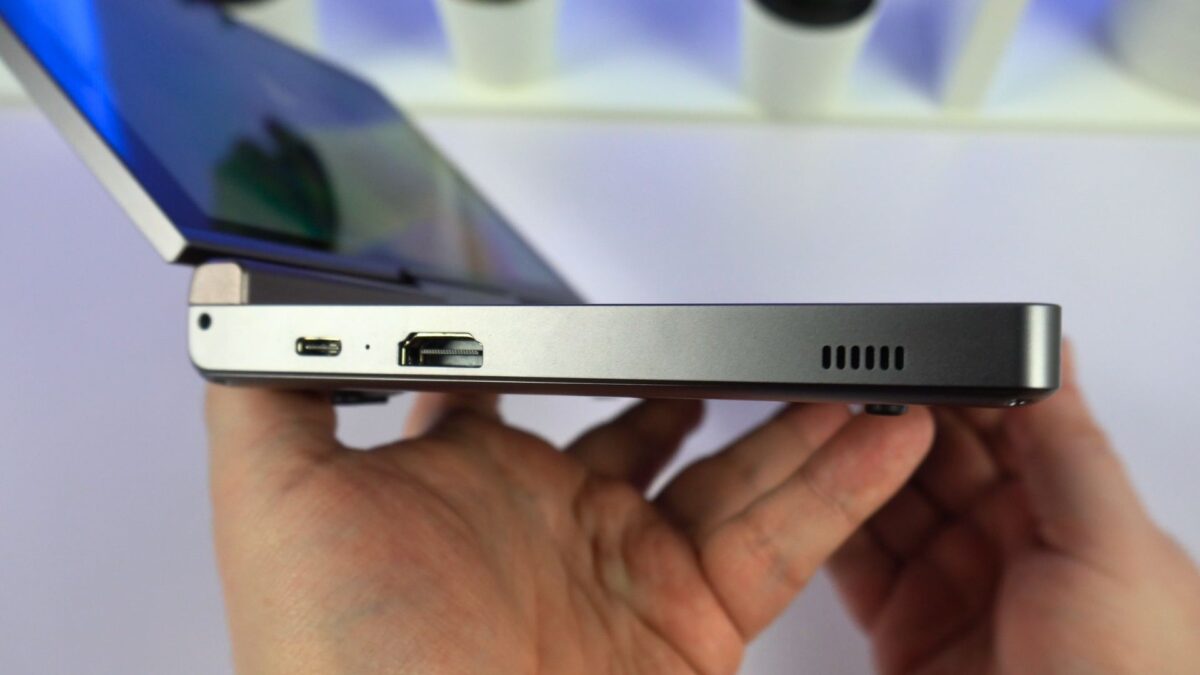
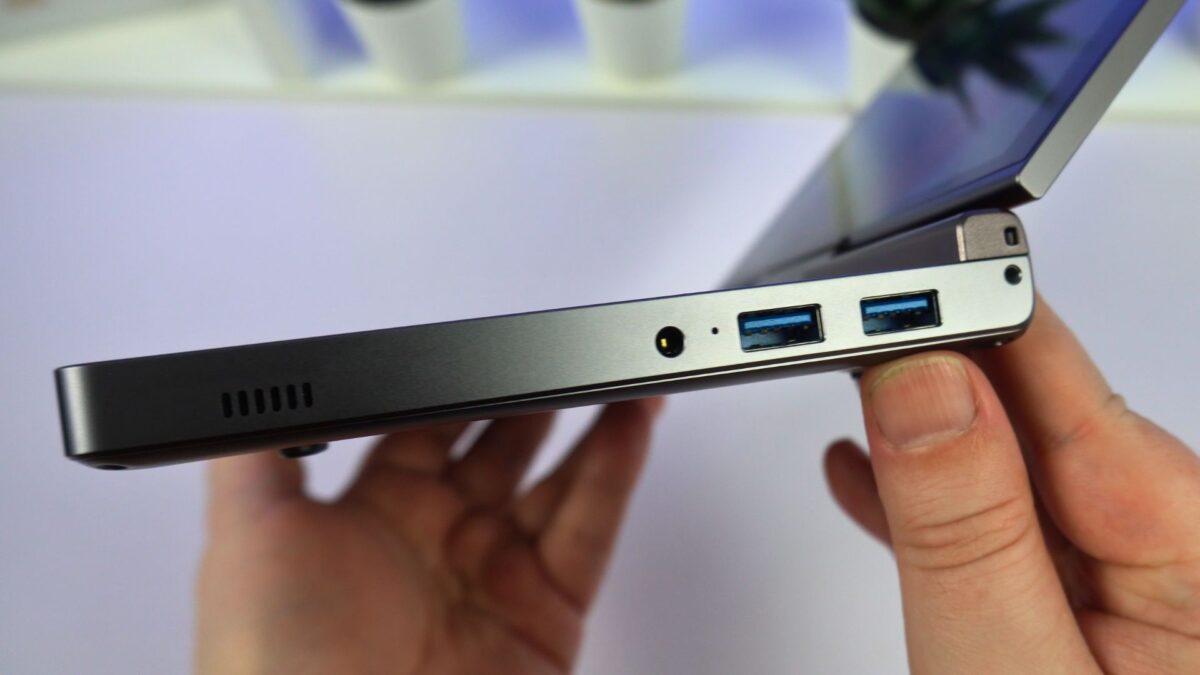
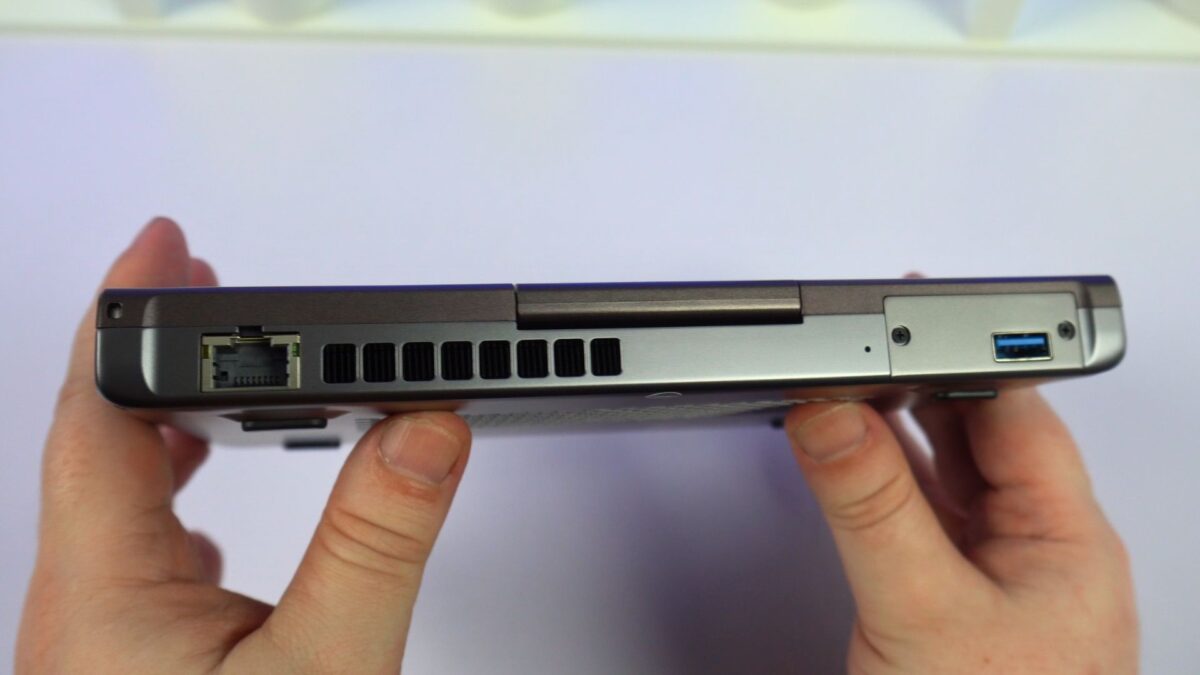
The left side of the laptop for business features a USB Thunderbolt 4 port and an HDMI port for external displays, while the right side includes two USB 3.2 ports and a 3.5mm headphone jack. The back houses a 2.5Gbps Ethernet port for fast wired connections. Notably, there’s a modular port on the back, adding flexibility to the GPD Pocket 3. It comes with a USB 3.2 port module by default, but you can swap it out with other modules available separately.
Modular Port with RS-232 & KVM Capabilities
Next in our GPD Pocket 3 review we take a closer look at the star of the show, the modular port. Swapping out the module is straightforward: just remove two screws, replace the module, and screw it back in. Currently, two modules are available—an RS-232 DB9 port and a single-port KVM Module with HDMI and USB input.
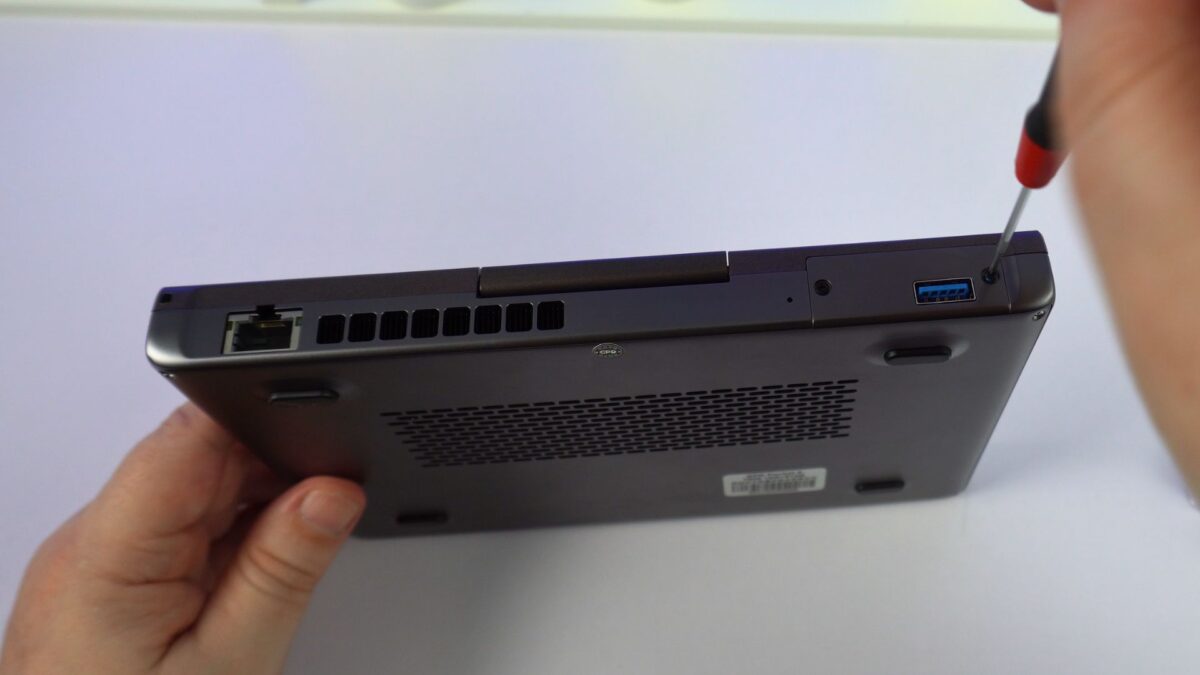

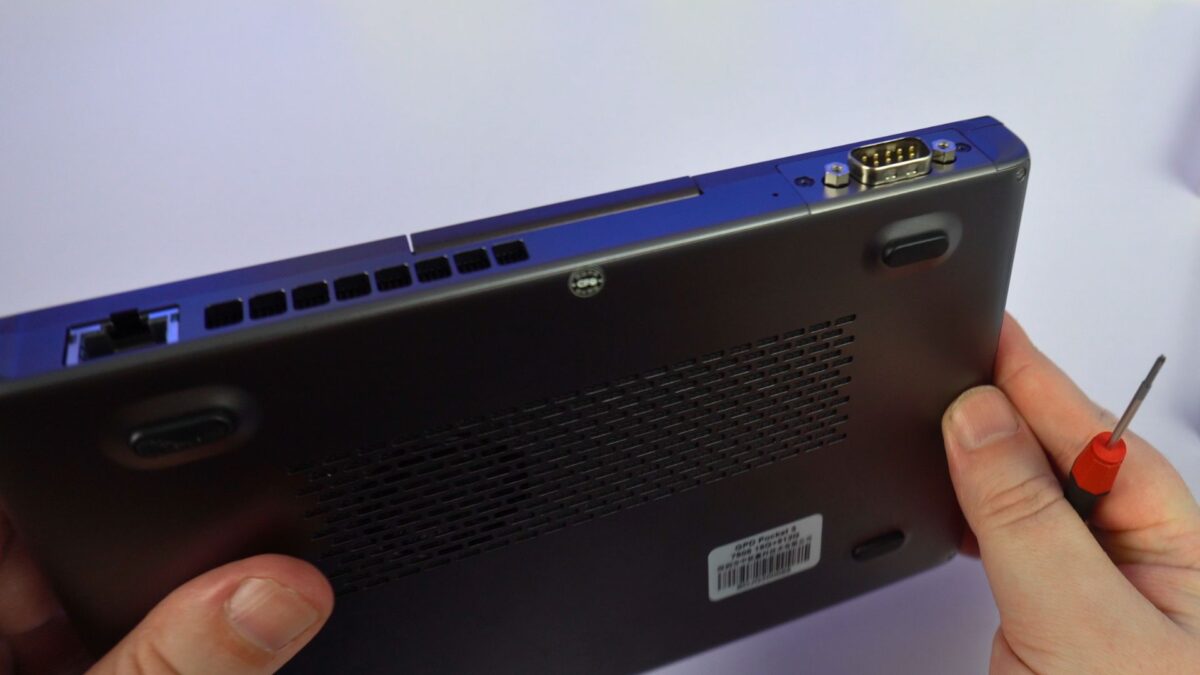
These modules are particularly useful for industrial applications, offering hardware-level access for data analysis or control, requiring only a display, keyboard, and mouse. The GPD Pocket 3 comes with pre-installed software to support the KVM module.
180° Rotatable Touchscreen Display
Lets also take a closer look at the 2-in-1 mini laptop and tablet functionality as part of our GPD Pocket 3 review. As mentioned, the GPD Pocket 3 can transform from a compact laptop into a tablet with a simple twist of the display. Although it’s thicker than a typical tablet, it offers a rugged design that provides a reassuring grip.

The device is fully compatible with the GPD stylus and Surface Pen, utilizing the MPP2 protocol. This makes it excellent for note-taking or drawing, although artistic talent is not included!
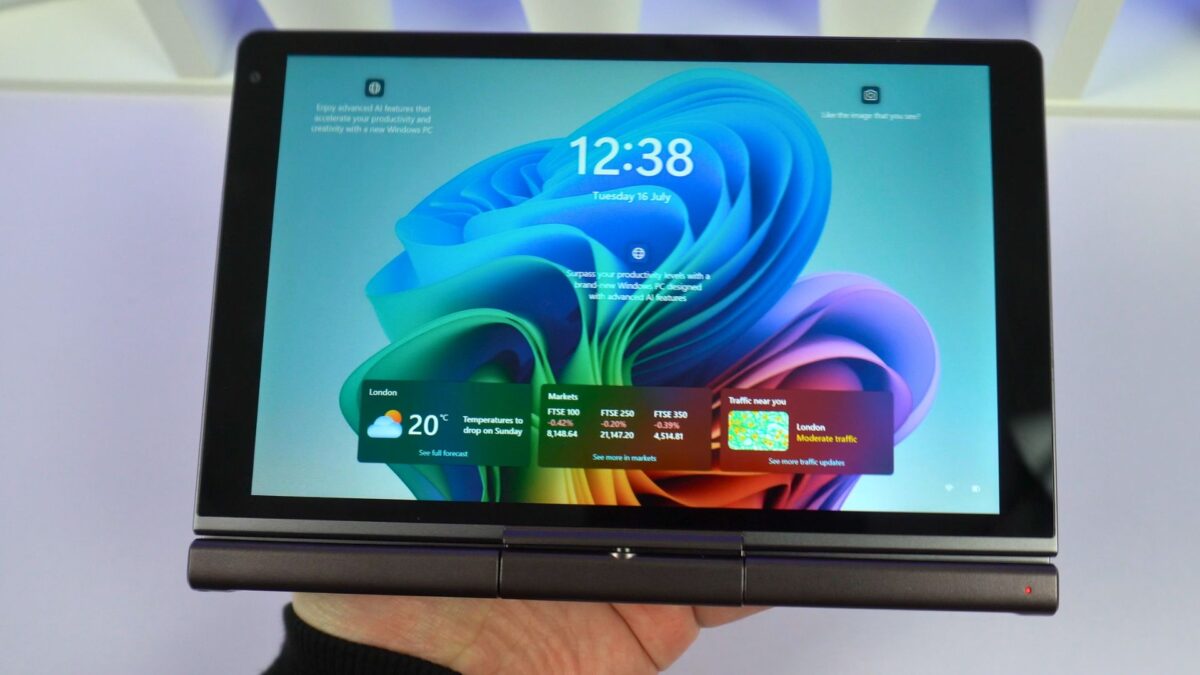
Technical Specifications
This upgraded version of the GPD Pocket 3 boasts several improvements, particularly in its CPU. Here are the key specifications, along with some battery life, fan noise, and temperature test results as part of the GPD Pocket 3 review.
- Display: 8″ H-IPS, 10-point Touch Control with 1920×1200 resolution, 284 PPI, active stylus support with 4096 levels of pressure sensitivity.
- CPU: Intel Pentium Gold 7505, 2 cores, and 4 threads, up to 3.5GHz, with a 25W TDP.
- GPU: Intel UHD Graphics for 11th Gen, up to 1250 MHz, 48 EUs.
- RAM: 16GB LPDDR4X 3733.
- Storage: 512GB or 1TB M.2 2280 NVMe 1.3 PCIe Gen 3.0 x4.
- Communications: Wi-Fi 6E, Bluetooth 5.3, 2.5Gbps Ethernet.
- I/O: Thunderbolt 4, HDMI 2.0b, 2x USB 3.2 Gen2 Type-A, 3.5mm headphone port, Chocolate-style QWERTY backlit keyboard, Power button with fingerprint scanner, Touchpad with 3-button mouse controls.
- Camera: 2 million pixels, 1600×1200 resolution with microphone.
- Battery: 38.5Wh, 7.7V==5000mAh×2 Series.
- Dimensions: 7.79 x 5.3 x 0.78 inches (19.8 x 13.7 x 2.0 cm).
- Weight: 725g (1.59 lbs).
- Modules: 1x USB 3.2 Gen1 Type-A (included), 1x RS-232 (available separately), 1x KVM Control Module (available separately).
The device runs on two 5000mAh rechargeable batteries. In our tests, running the high-demand Cinebench benchmark on a loop, the battery lasted 2 hours and 10 minutes. When idle on the desktop, it lasted around 11 to 12 hours, with average usage falling between 5 to 6 hours.
For fan noise and temperature tests, while running Cinebench, we recorded a maximum fan noise of 59 dB and a peak temperature of 49°C, which is relatively quiet and cool.
System Benchmarks
As part of our GPD Pocket 3 review we will benchmark and compare the results with other similar ultra-portable notebooks.
PCMark
In PCMark tests, the GPD Pocket 3 showed impressive results, far surpassing the previous Intel Pentium Silver N6000 model and even outperforming the One Netbook A1 Pro. However, it does lag behind the more powerful and expensive Intel Core i7 models.
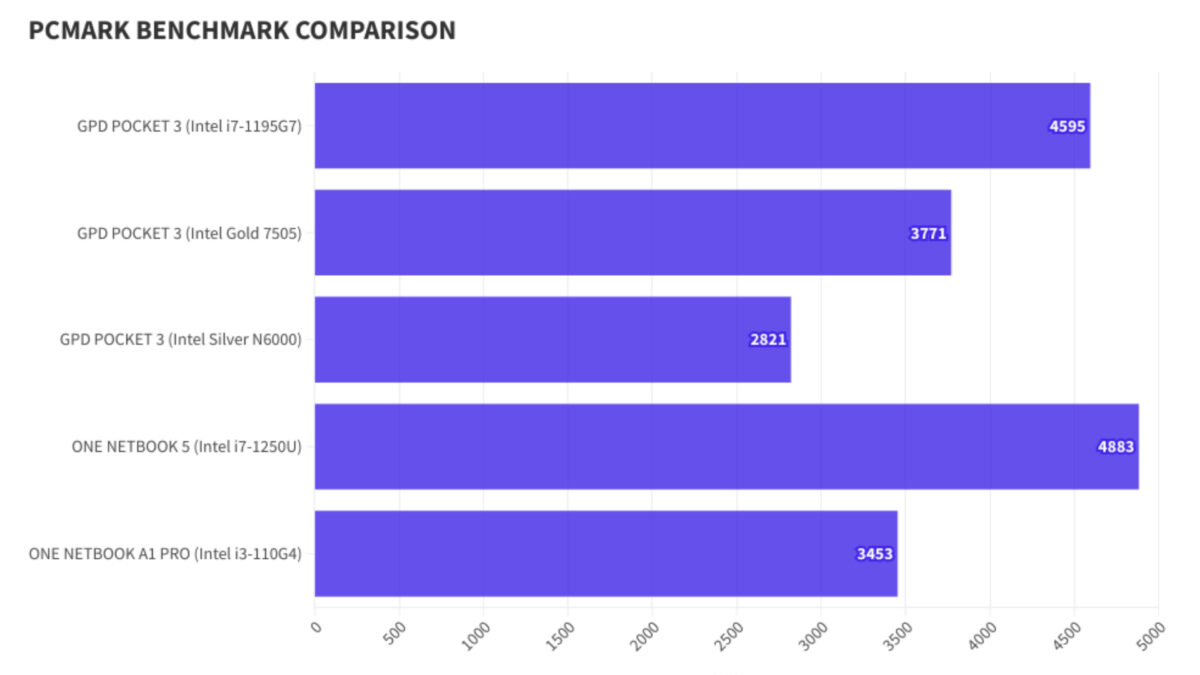
The small-sized laptops scores make it ideal for students, handling tasks like note-taking and working on large documents with ease. It’s also suitable for business use, whether at home or in the office.
Cinebench R23
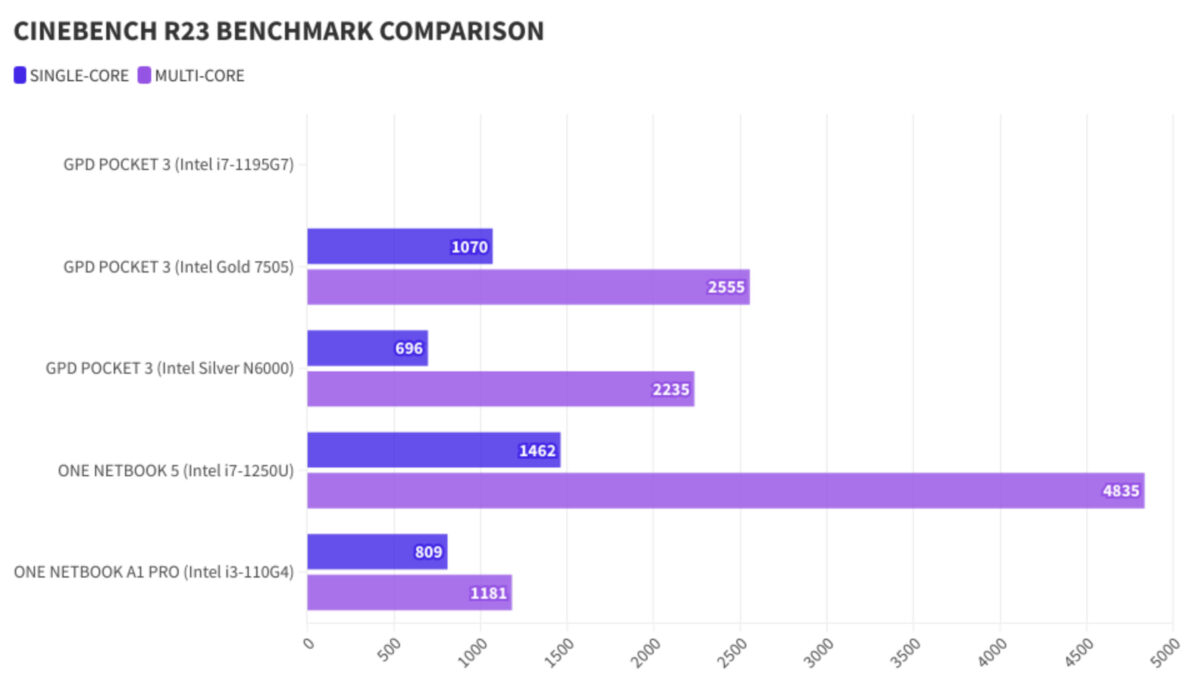
The Cinebench R23 benchmark revealed solid performance from the GPD Pocket 3, with faster single-core and multi-core performance compared to its predecessor, the N6000, and the A1 Pro. While it doesn’t match the performance of the Intel Core i7-1195G7, the Intel Pentium Gold 7505 processor offers a strong alternative.
3DMARK
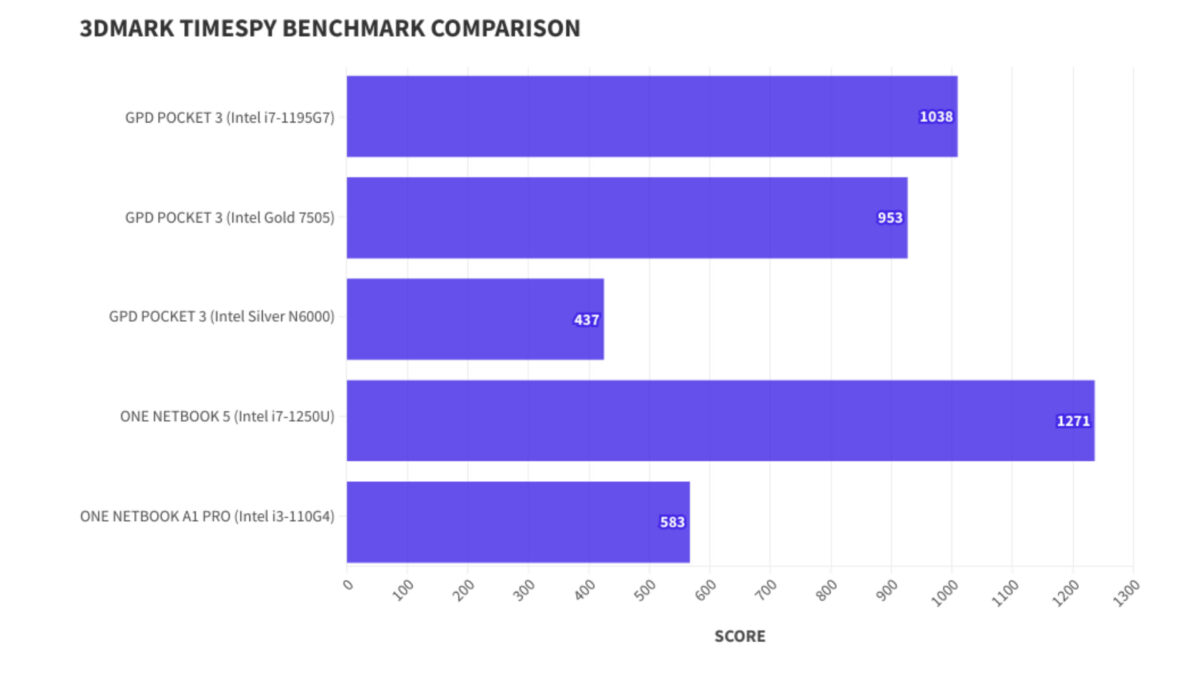
While these ultra-portable notebooks aren’t built for gaming, their integrated GPUs are capable of handling media decoding and light image and video editing. In TimeSpy, the GPD Pocket 3 scored an impressive 953, significantly outpacing the Pentium Silver N6000 and A1 Pro models. It even comes close to the i7 variant, which is notable.
Dual Monitor Support
By utilizing the USB-C and HDMI ports, you can connect two external monitors, supporting up to 4K at 60Hz, or a single monitor via USB-C, supporting up to 8K at 60Hz. We tested it with DroiX PM14 4K portable monitors, which looked fantastic in tandem.
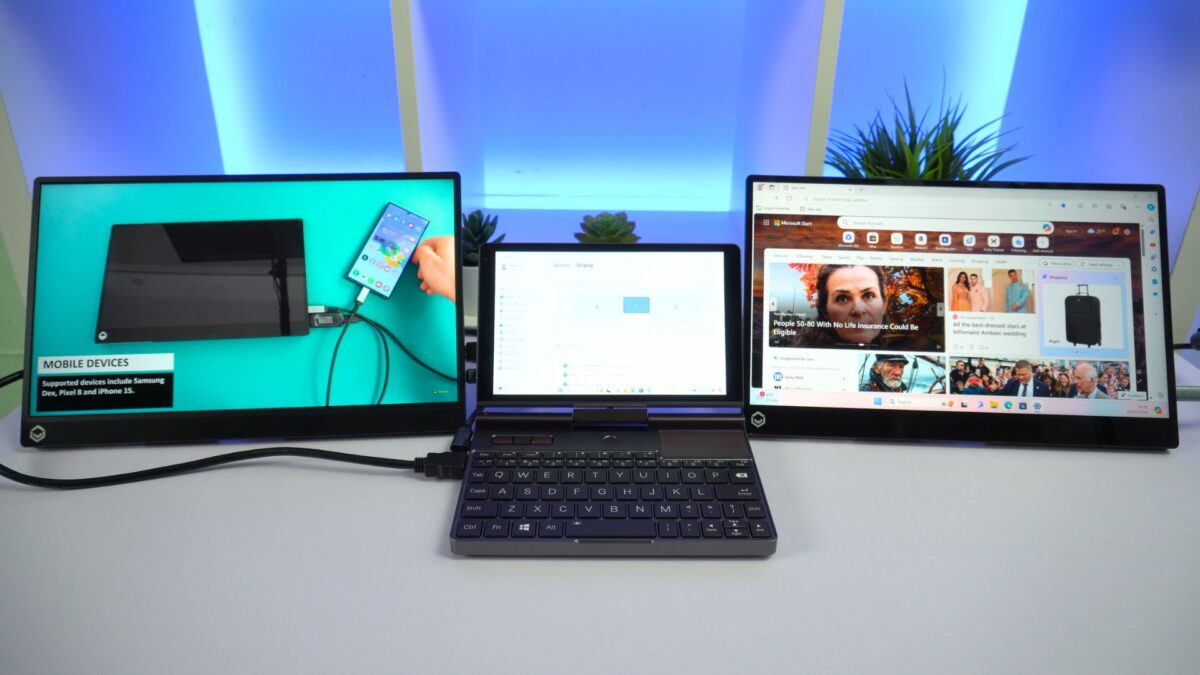
Thunderbolt 4 and External Graphics Dock Support
With the USB Thunderbolt 4 port, the GPD Pocket 3 can be connected to an eGPU, such as the GPD G1 eGPU docking station or the ONEXPLAYER ONEXGPU. This significantly boosts graphics performance, enabling demanding tasks like image and video editing, rendering, and improving gaming experiences from low to high-demand titles.

When paired with the G1 eGPU, the GPD Pocket 3 achieved a Time Spy score of 953 on the iGPU compared to 6,067 with the eGPU. In more demanding benchmarks like Night Raid and Fire Strike, we scored 18,129 and 11,564 respectively, which is comparable to the ONENETBOOK 5. This eGPU support offers a more desktop-like experience for those needing extra performance, especially when battery life isn’t a concern.

Final Thoughts
In terms of performance, the Intel Pentium Gold 7505 processor offers a noticeable improvement over the previous Silver N6000 model, particularly in GPU performance. While it doesn’t quite match the i7 lightweight laptops, those come with a higher price tag, which is worth considering.
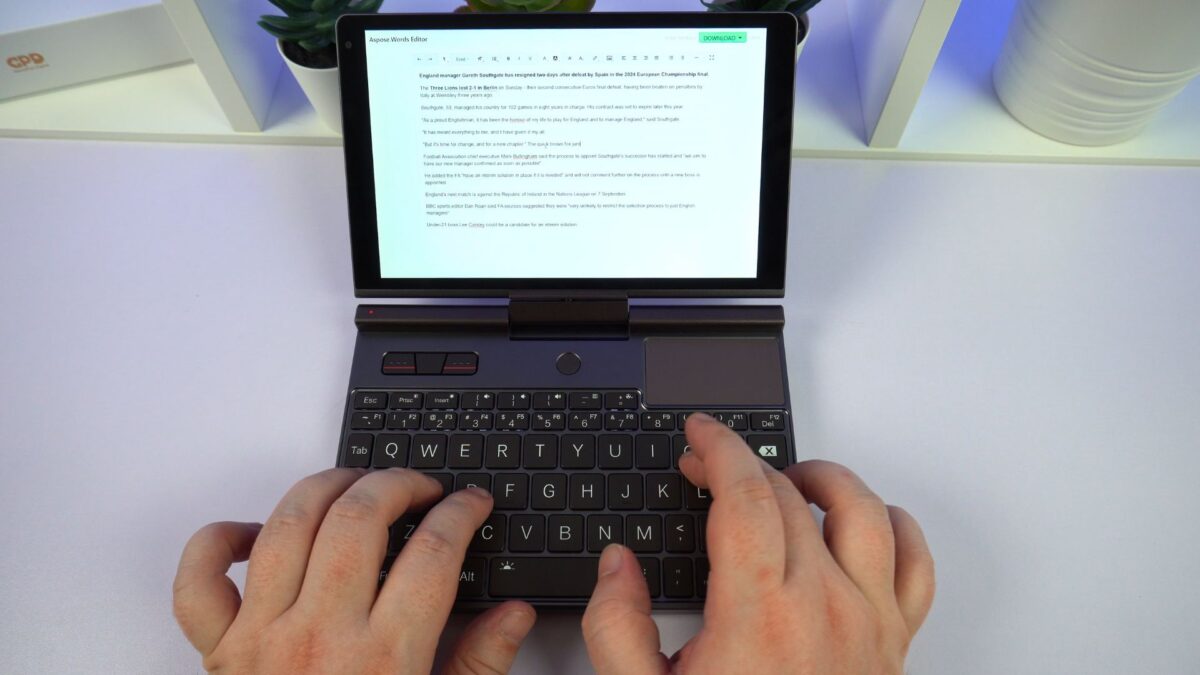
For day-to-day usage, whether at home or in the office, the GPD Pocket 3 handles large office documents and light image editing with ease. The option to connect two additional monitors further enhances its utility. And if you need more power, the eGPU option is available.
The real strength of the GPD Pocket 3 lies in its industrial use, especially with the option of an RS-232 port, making it an excellent choice for professionals. While external solutions exist, they can be unreliable and add extra hardware and cables to carry around. Having this capability built-in is far more convenient.
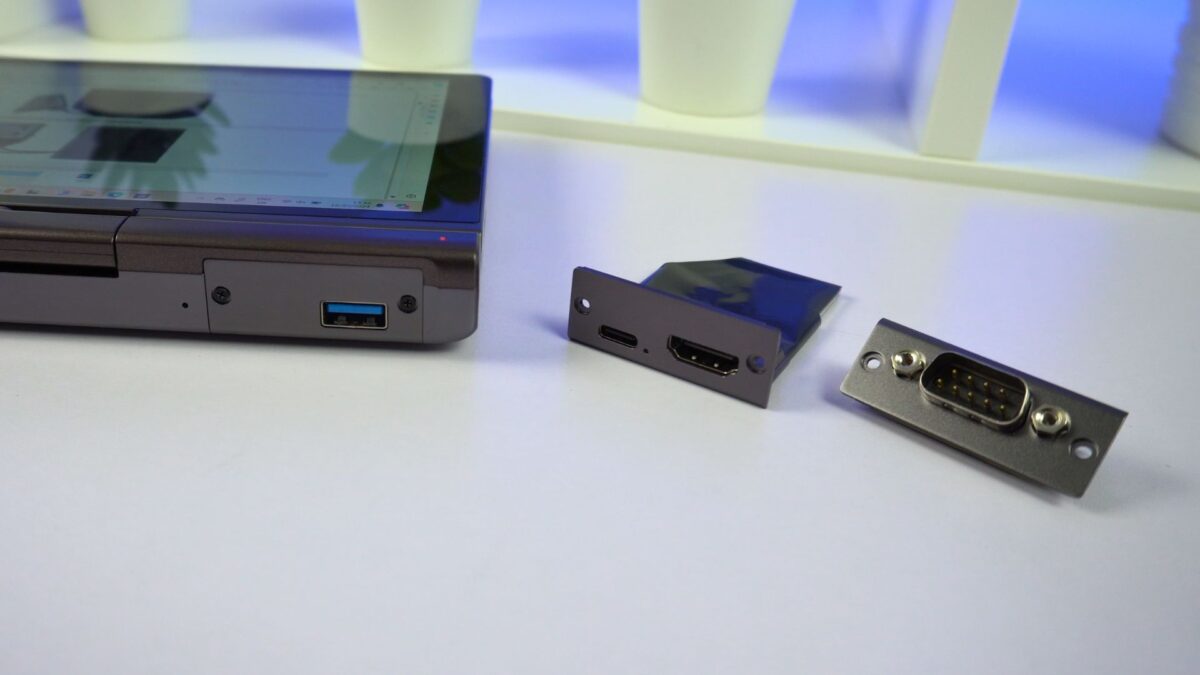
The portability of the device is another major plus. Although the 8-inch touchscreen may seem small, it strikes a great balance between portability and usability. It’s compact enough to fit in a jacket pocket or small bag and can be easily carried in one hand, whether in mini laptop or tablet mode.
Overall, I found little to dislike about the GPD Pocket 3. It has been a popular ultra-portable notebook for several years, and it has everything you need for day-to-day use, whether at home, in the office, or on the go. We highly recommend it if you’re looking for a reliable, fast, and versatile 2-in-1 mini laptop and tablet.
GPD Pocket 3 Mini Laptop
- Intel® Core™ i3-1125G4 up to 3.70GHz ; 4 Cores/8 Threads
- 16GB LPDDR4x RAM @3733Mhz
- Thunderbolt 4 / 8″ Touchscreen Display / Fingerprint Scanner
- Up To 2TB of PCI-E NVMe SSD
- Modular w/ KVM/RS-232 Ports (Sold Separately)
1 comment
Leave a Reply
Your email address will not be published. Required fields are marked *

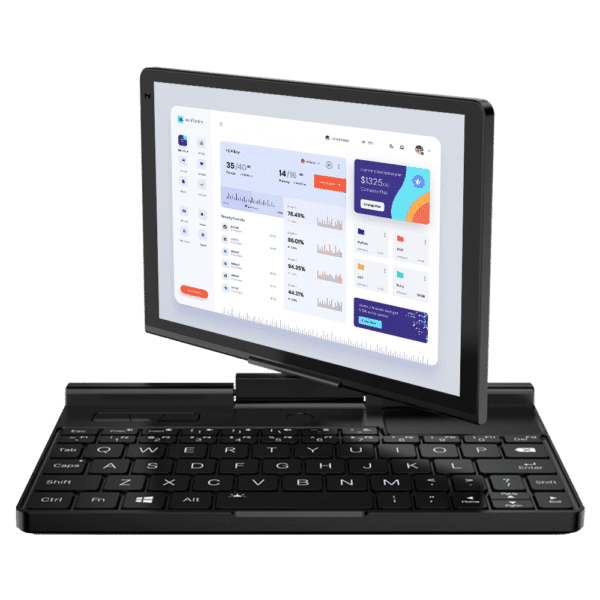

Sehr geehrte Damen und Herren,
in der Produktbeschreibung erwähnen Sie mehrfach, dass es sich um eine QWERTZ-Tastatur handelt. Auf den Abbildungen sind aber immer nur QWERTY-Tastaturen zu sehen. Da ich aus Deutschland komme und sowohl in meinem Namen wie auch in meiner Adresse Umlaute vorhanden sind, benötige ich auf jeden Fall eine vollwertige QWERTZ-Tastatur. Um welche Tastatur handelt es sich bei Ihrem Laptop GPD Pocket 3 ? Ich würde ja sonstwas bezahlen, wenn es ENDLICH einen Mini-Laptop mit QWERTZ-Tastatur geben würde.
Mit freundliche Grüßen
Marc Römer
Leider werden sie aufgrund der Nachfrage nur mit QWERTZ-Tastaturen hergestellt.
Thank you for your detailed message. We truly regret the inconvenience and frustration you’ve experienced and appreciate you taking the time to share your feedback.
We have thoroughly reviewed the communication history and timeline of events relating to your order. Your package was shipped on March 31st via FedEx, and you first contacted us on April 5th requesting an update. According to the tracking records, a hold for pickup was placed on April 4th, and on April 6th, you informed us that FedEx was investigating the whereabouts of the parcel, requiring shipper cooperation. We understand your concern that you had to request tracking details manually — this is certainly not the level of service we aim to provide.
We sincerely apologize that you did not receive the tracking information after your order was processed. We’ve identified and resolved the issue that caused this. Please note that we have fail safe systems in place where even if our system does not send an email with your tracking number, FedEx’s system will send an email once the label is created. We would recommend also checking your spam/junk folder if this email was missed, as unfortunately we cannot control FedEx’s emailing system.
Our team responded on April 6th to your support request, advising that we had raised the issue with our logistics team and would follow up by Monday, April 7th. We also noted that sending multiple emails in a short period may push newer messages further down our queue due to how our ticketing system is structured. That said, we had already initiated an investigation with FedEx after receiving your first email and were awaiting their response — which, as mentioned in our reply on April 9th, can take time due to the need to check at local facilities before determining next steps.
As you noted in your follow-up on April 10th, the parcel resumed movement after being released from customs and you already spoke with FedEx about it. Based on the tracking updates, it was available at a local FedEx facility following your hold request.
To clarify: once a customer initiates a hold request directly with the carrier, any resulting delay or delivery issue falls outside our control. We understand how frustrating this experience was, especially considering the signature requirement and timing concerns at your work address.
In light of your request for a complimentary KVM module and stylus as compensation, we regret to inform you that this could not be approved. However, as a gesture of goodwill and appreciation for your patience, we offered a 5% discount on your next order, which you declined.
While we cannot offer complimentary items, we are happy to assist you in filing a delayed delivery claim — although in this case, FedEx confirmed that the delivery was delayed due to a customer-initiated hold, which disqualifies it from that process.
As of now, your parcel is confirmed to be held at a FedEx facility. We recommend collecting it at your earliest convenience to avoid any storage charges that FedEx may impose. If you do not wish to accept the delivery, we can initiate a return and refund in accordance with our website’s terms and conditions. Please note that any refund would be subject to a restocking fee of up to 10%, and any taxes or duties paid would not be refundable.
Once again, we truly apologize for the inconvenience and communication gaps you’ve experienced. Your feedback has been shared internally for improvement, and we’re committed to doing better in the future. Please let us know how you would like to proceed or if there is anything further we can assist with.